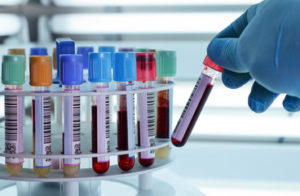Ah DNA. It doesn’t get enough credit sometimes! Or does it? In this blog we address the half-truths about taking DNA tests, what you can use DNA tests for and how best to interpret them.
Addressing the myths and legends

There have been many assumptions that DNA can tell you all sorts of information, and the results may be shocking: you may get a complete ancestral revelation! Not true. You may have even heard of these popular myths:
- If you and a sibling take a DNA test, your results will be the same
- All DNA tests require a blood sample
- If you’ve uncovered an extensive amount of your own genealogical research, the tests will not surprise you
These are also not true! Read here for these MythBusters.
It’s important to know that DNA works by analysing specific DNA and comparing to other samples. From this, matches can be formed and due to the popularity of DNA testing, there is a large database where matches are developed.
Here are the facts

It’s worth noting that DNA tests can’t tell you everything just as it may not give you the information you had expected. Here’s what can and can’t be determined.
They can’t tell you exactly where your ancestors lived
Tests can’t directly compare your DNA to that of those exact ancestors, because it’s very difficult to tell the difference between populations living in two nearby areas. People move around, get together and separate.
"Ancestry itself is a funny thing, in that humans have never been these distinct groups of people," said Alexander Platt, an expert in population genetics at Temple University in Philadelphia. "So, you can't really say that somebody is 92.6 percent descended from this group of people when that's not really a thing."
He goes onto explain that the real science of population genetics is used to figure out how groups of people have moved and mixed over time. So essentially, figuring out whether eight to ten percent of your ancestors came from North Africa isn’t a part of DNA testing – that’s not how human history works!
You are more likely to receive detailed results from your tests depending on your background
Certain populations, mainly European, are likely to receive more detailed testing results simply because there is more data represented.
DNA tests can breakdown your ethnicity by percentage
These percentages can help you uncover what religion your ancestors practiced. If your estimates show up as 20 percent Irish and 17 percent Spanish, your ancestors may have practiced Catholicism, for example.
These tests, however, can’t tell you who you are or what your identity is.
According to an article written by Top10.com, "If for instance, you have lived your whole life as a certain race and in a certain culture and environment, finding out say, that you’re actually 18% sub-Saharan African or conversely, 15% Norwegian, does not mean you need to rethink who you are."
Many testing kits provide ancestral reports
These can determine how closely related you are to someone else, and can be very insightful if you wish to find long lost relatives, or learn about your parents and grandparents if you’re adopted.
Different companies, different results

DNA test results from varying companies can come back differently and no doubt this can be confusing if you were looking for certainty by testing with different companies. DNA is measured in units called centiMorgans and tests that measure those are run on microarrays (or DNA chips as they are commonly known) that cover 700,000 markers. This represents a fraction of total variation in our genomes. Some regions have poor coverage on chips and so there is a possibility of errors when inferring matches. DNA testing companies have a database of various matches and so, while matches who have close relations sharing large amounts of DNA will have a high level of accuracy, if you are looking at distant cousins, your matches are likely to be false.
Making sense of your DNA

Many of you who have received your test results may not be sure what to do with them!
In order to get the most out of your results and make them seem less confusing aim to:
Set a clear goal on what it is you wish to cover
Is it finding out who your cousins or great-great-grandparents are? Estimating your ethnicity? Or something else?
Focus on matches that are available
But don’t waste time looking at the ones that aren’t worth your time!
If your results have come up with a long list of matches, try deleting the low matches (those with 7cM) and recalculate the number of centiMorgans shared, looking at your matches with 25cM or more.
Discover your past, present and future

While DNA tests are increasingly popular, they are not 100% infallible. They are nonetheless incredibly useful in family history research. Home testing kits can provide you with accurate information to help you learn about your ancestry.
It’s important to go into the test knowing what you are looking for and to have an understanding of what DNA tests can and can’t tell you for an all-round gratifying and worthwhile experience.


